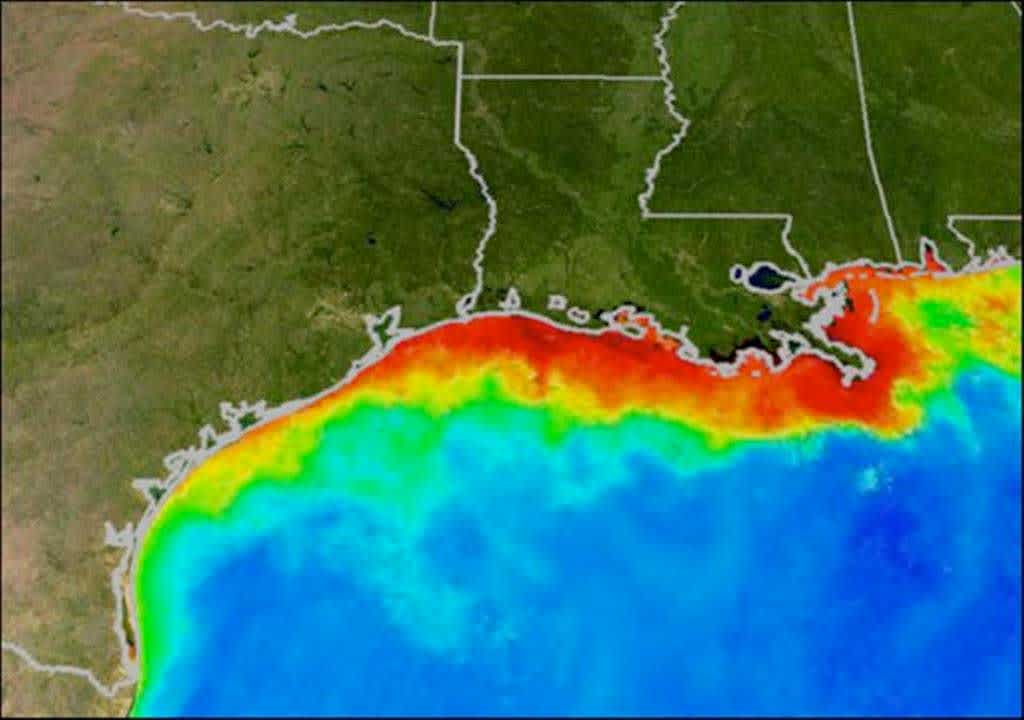Scientists: 2013 Gulf of Mexico “Dead Zone” Potentially Largest Ever
OutdoorHub Reporters 06.25.13

Fishermen headed towards the Gulf of Mexico this summer might experience a lighter bite than usual, due to the phenomenon known as “dead zones.” Dead zones are low-oxygen waters caused by events such as algae die-offs. They occur near coasts and often serve as a death warrant for the marine species living there.
Scientists at the University of Michigan predict that the Gulf may experience its largest dead zone ever recorded this year, with high-end estimates placing the size of the oxygen-depleted waters at between 7,286 and 8,561 square miles. If the dead zone reaches the higher end of the estimate it would exceed the largest ever reported in the world, and be roughly the size of New Jersey.
This new and worrying prediction comes on the heels of last year’s near-record low dead zone. Due to drought conditions, 2012’s dead zone was the fourth smallest on record. Dead zones usually happen in high-nutrient waters that promote algae growth. As the algae dies, it sinks to the bottom of the ocean where bacteria can make a meal of it. The bacteria also consume large amounts of oxygen while eating the algae. Because of this, dead zones are most pronounced in deep, coastal waters.
Along with other marine life, fish and shellfish face a stark choice: leave or die. A large dead zone could spell disaster for commercial fishing or saltwater anglers. Commercial fishermen pump $629 million into the Gulf region annually and sport fisherman contribute even more. Three million anglers flock to the Gulf every year, spending upwards of $1 billion.
The prediction for a record-sized dead zone jeopardizes the region’s ongoing efforts to protect fisheries and shellfish species such as crab and oysters. Shellfish are most at risk from dead zones due to their low mobility and are often killed in large numbers. Fish that manage to survive in dead zones also suffer long-term health defects such as smaller reproductive organs.
“Monitoring the health and vitality of our nation’s oceans, waterways and watersheds is critical as we work to preserve and protect coastal ecosystems,” said Kathryn Sullivan, acting National Oceanic and Atmospheric Administration (NOAA) administrator. “These ecological forecasts are good examples of the critical environmental intelligence products and tools that help shape a healthier coast, one that is so inextricably linked to the vitality of our communities and our livelihoods.”
The culprits are often nutrient-rich fertilizers that have found their way into the water, made possible by the recent spree of floods and heavy rains. According to scientists, runoff from farms as far away as the Corn Belt have reached the Gulf. Federal, state, and tribal agencies are now attempting to reduce the amount of fertilizers entering the nation’s waters, but are struggling to meet their goals.
“The size of the Gulf dead zone goes up and down depending on that particular year’s weather patterns,” said Univeristy of Michigan ecologist Donald Scavia. “But the bottom line is that we will never reach the action plan’s goal of 1,950 square miles until more serious actions are taken to reduce the loss of Midwest fertilizers to the Mississippi River system, regardless of the weather.”

